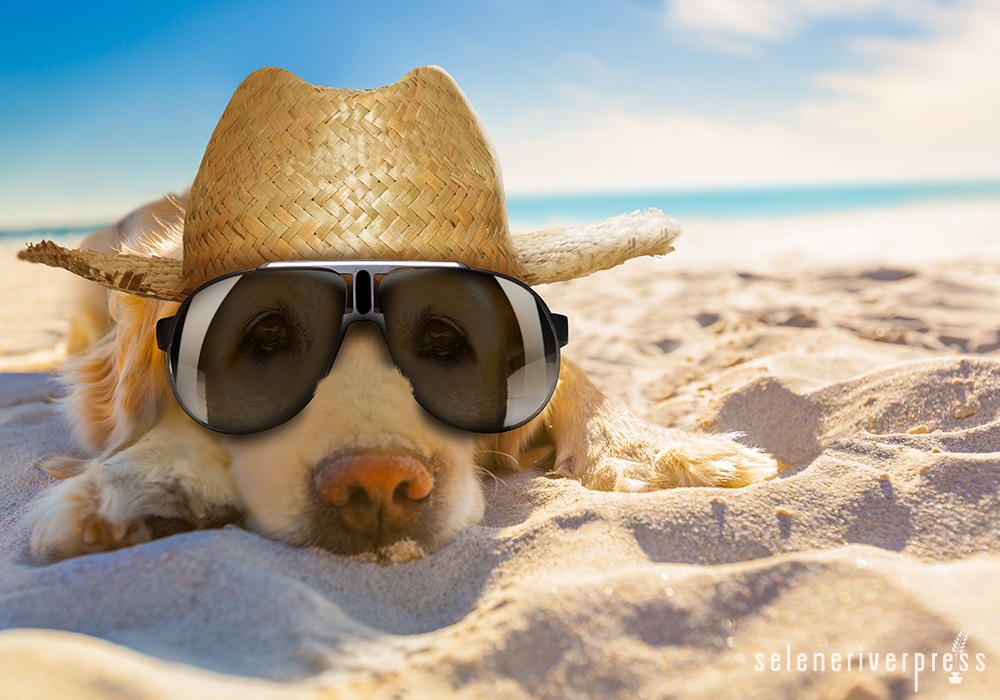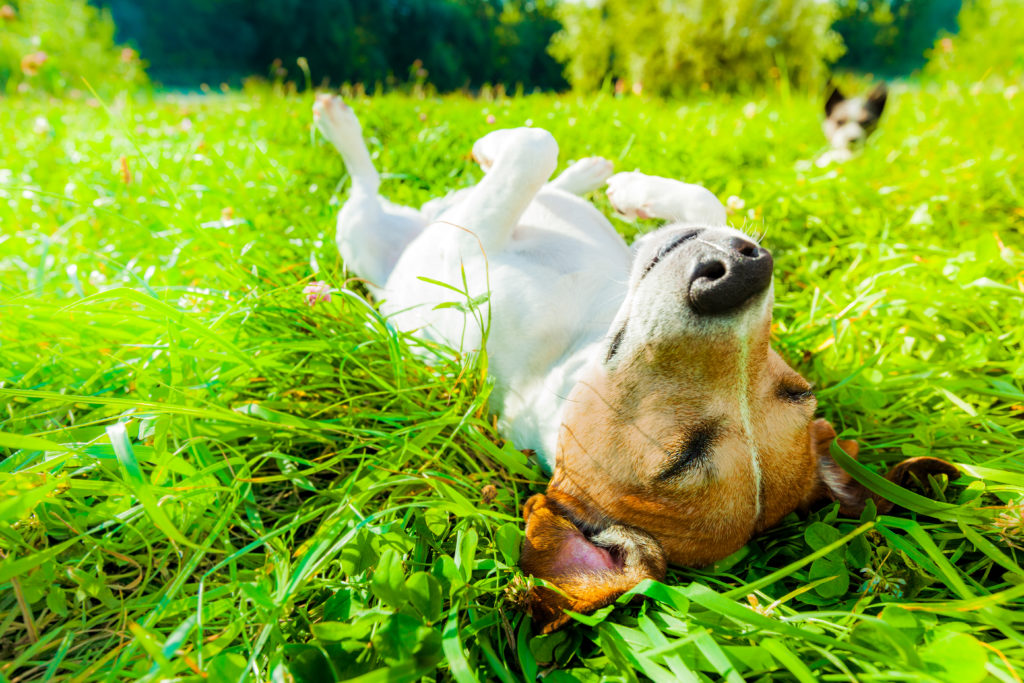It may already be August, but we still have plenty of hot, sunny days before summertime is officially over. Like any other season of the year, summer brings unique pleasures and potential hazards for our four-legged family members. Just like humans, dogs can get sunburned from excessive sun exposure. However, some dogs are more predisposed than others. White dogs with short hair, including bull terriers, pit bulls, dalmatians, French bulldogs, greyhounds, and boxers, all tend to be more susceptible to sunburn than dogs with darker skin and thicker coats.
A sunburn is no different for a dog than it is for us. Too much sun will make their skin red and tender to the touch. Because their noses, ears, and tummies have less fur, these areas are the most likely to get sunburned. It’s important to watch out for this because dogs exposed to too much sun can develop skin cancers, including hemangiosarcoma and squamous cell carcinoma.
If you’re planning any more beach trips, barbecues, days by the pool, or any other outdoor activities with your dog this summer, you need to consider how to protect your pet both internally and externally from sun and heat.
Let’s take a look at some options for external sun protection. You can guard your dog from the sun’s harmful rays with a nontoxic sunscreen that’s safe for dogs. It’s best to use a product that not only helps protect your pet from harmful rays but also nourishes and moisturizes their skin. Make sure that it contains no dangerous chemical ingredients, parabens, artificial fragrances, nanoparticles, or mineral oil. Look for products that are noncomedogenic (doesn’t irritate or clog pores) and developed with no animal testing or cruelty. (However, the FDA doesn’t regulate these claims on product labels or advertising, so make sure to do your homework.)
Many times, pet owners will groom or shave their dogs to keep them cool in the summer, but I recommend that you leave your dog with as much of their natural fluff as possible. Their fur helps block the sun and regulate their body temperature.
Most dogs will instinctively seek shelter from the sun when the rays become too intense, but you should always provide plenty of shade. A big umbrella at the beach, a shady tree at a park, a roof for your backyard patio, or a sun-block top for an outdoor kennel are good considerations. When your pet has to be outside during peak sun hours, you can also use bodysuits, shirts, and hats/visors with ultraviolet protection. Dog goggles (or “doggles,” if you like) can also be used to protect their eyes from the sun.
Now let’s discuss internal ways to protect your pet from sunburn. Vitamin D is created in humans, birds, and animals when the rays of the sun irradiate cholesterol on the skin. When birds preen their feathers and animals lick their fur, they consume that vitamin D. Because vitamin D transports calcium out of the gut into the bloodstream, prolonged sun exposure creates high levels of vitamin D, causing more and more calcium to enter the bloodstream. This would be fine but for the fact that the calcium cannot be transported from the blood into the tissues without vitamin F. The calcium effectively becomes trapped in the blood, a condition known as hypervitaminosis D. The excess buildup of vitamin D can cause the many uncomfortable symptoms of sun and heatstroke, but when vitamin F is present, these symptoms cannot occur. The vitamin F transports the calcium to the tissues—including the skin—which in turn offers protection from sun and heat.
Back in 1934, Dr. Royal Lee, founder of Standard Process supplements, combined several synergistic ingredients to make Cataplex F, an essential fatty acid and iodine combination. The great thing about Cataplex F is that it unites with the increased calcium blood levels, mobilizing the calcium back into the tissues for balance. If you or your dog get a sunburn or suffer heat exhaustion, a combination of Cataplex F and Calcium Lactate will usually relieve the sunburn overnight. (Being a redhead, I’ve experienced this first hand.)
I recommend that when you’re out with your dog in the heat, try to make it before ten in the morning or after four in the afternoon. Bring plenty of water (and a portable bowl), doggie sunscreen, and body attire or accessories for added protection—and don’t overdo it. Always watch your dog for signs of overexertion or heatstroke. And make sure to take sit-downs in the shade, water breaks, and plenty of Cataplex F tablets for both you and your dog!
Images from iStock/damedeeso (main), damedeeso (post).
 Get self-health education, nutrition resources, and a FREE copy of A Terrible Ten: Health Foods That Ain't ebook.
Get self-health education, nutrition resources, and a FREE copy of A Terrible Ten: Health Foods That Ain't ebook.


Most dogs and cats have insufficient levels of vitamin D. Unlike humans, dogs and cats do not produce vitamin D from sunlight; their sole source comes from their diet. To compound the issue other factors play a role in vitamin D uptake including intestinal absorption, age, and intact status. So, I question the reasoning of using Cataplex F v sun overexposure in dogs, although it can be useful for skin conditions in general.